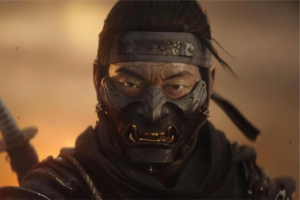The topic of women and other non-binary groups has long been known and discussed regarding how their likenesses are represented in video games and their industry presence.
It is true that inclusion within the industry (due to luck and the efforts of various militant groups) has progressed over the years. However, the numbers for e-sports —one of the sectors with the highest projected growth, especially after the onset of the global pandemic— unfortunately do not reflect equal participation. Ultimately this continues to be a problematic trend and one in which we should continue to develop ourselves as participants.

The Reasons Why
Initially, video games were not developed to be converted into e-sports but rather to provide entertainment from a creative and technological perspective. In the 80s and 90s, the stereotypical nerd was adolescent, cisgender, straight, white, and male. Console makers didn’t just target this audience; women’s likenesses were represented as a basic objectivized version of their sexualized bodies. Of course, this framework was also prevalent in how women were reflected in stories: the two options were the damsel in distress epitomized by Princess Peach in Super Mario or the more independent but lightly clothed “eye candy” such as the earlier Lara Croft in Tomb Raider.
You only need to look at any pictures of arcades from that era to know that finding a woman either inside playing or being featured on-screen was tougher than finding a needle in a haystack. These issues are magnified when we look at the numbers: during the 80s, the lack of representation and “group culture” was such that there were years when women’s involvement in the IT industry decreased sharply despite their increased participation in other professional areas.
It’s not hard to see that in a world where men reign and women’s sole purpose is to be rescued or as an object of desire, there is scant interest in participating within it, either directly or indirectly.

E-Sports and Its Controversies
This industry section has had the same luck even recently, which has developed after including women and non-binary people.
These controversies have taken place in several corners within the community:
- Communities: Playing online currently implies a stressful level of exposure for female players. Most chat rooms (both voiced and non-voiced) are not regulated and tend to be the basic means of exchanging information, or groups’ strategies are planned. In these instances, it is minority groups that are attacked the most, and companies rarely offer a consistent solution to this problem.
- Likenesses: As mentioned in the previous section, although video games have progressed regarding how bodies and genders are represented, major releases from the four main e-sports categories still fall short when it comes to representing reality. Most shooters have little to no representation of women except in certain titles, such as Valorant and Overwatch. However, they are not found in Counter-Strike and Call of Duty. The same thing happens with sexualized bodies in fighting games such as KOF and Guilty Gear; most RTS titles have male troops, and MOBA games frequently feature skinny, scantily clad women. Of course, this does not deter female participation, but it contributes to the lack of representation and supports the male-centric model that objectifies them.
- Economic inequality: Beyond the notorious difference in pay for male and female e-sports players, most notable is the difference in university scholarships, of which 88% are granted to males. This creates an imbalance when it comes to more inclusive proposals.
Highlights
It should be noted —especially when it comes to inclusion— that idiomatic localization is not always fully addressed as part of the problem but is something that would provide more equality. This would bring us to a needed comfort level to feel part of the community. One where we are able to communicate within and see characters that represent us and speak our language correctly.
Proper integration may also lead to a better understanding of different languages and nationalities. If this happens, it may allow for better connections between women and non-binary people who speak different languages. It’s also a gateway to general improvements in language ability.
Provisional Solutions
Currently, the best method has been to open the door to non-mixed teams. For example, the international e-sports organization Cloud 9 has started incorporating female teams and aims to go even further with it comes to inclusion.
Of course, these types of proposals are generally not viewed fondly by other more privileged groups, who allege that the lack of mixed groups will generate even further division. However, what can women and non-binary people do when faced with the fear of outing themselves to groups or even their own teammates that turn out to be unsafe?
The Takeaway
Perhaps the absence of mixed groups or their lack of presence is more a symptom than a solution. It may be the expected path in a process where women and non-binary people can progressively be motivated to participate in electronic sports. For many, it is ultimately a consistent and necessary source of livelihood.
Tests showing that no cognitive differences exist between men and women regarding their participation in e-sports are now a tangible reality of science. Therefore all that’s missing is to open our minds to non-discrimination.



